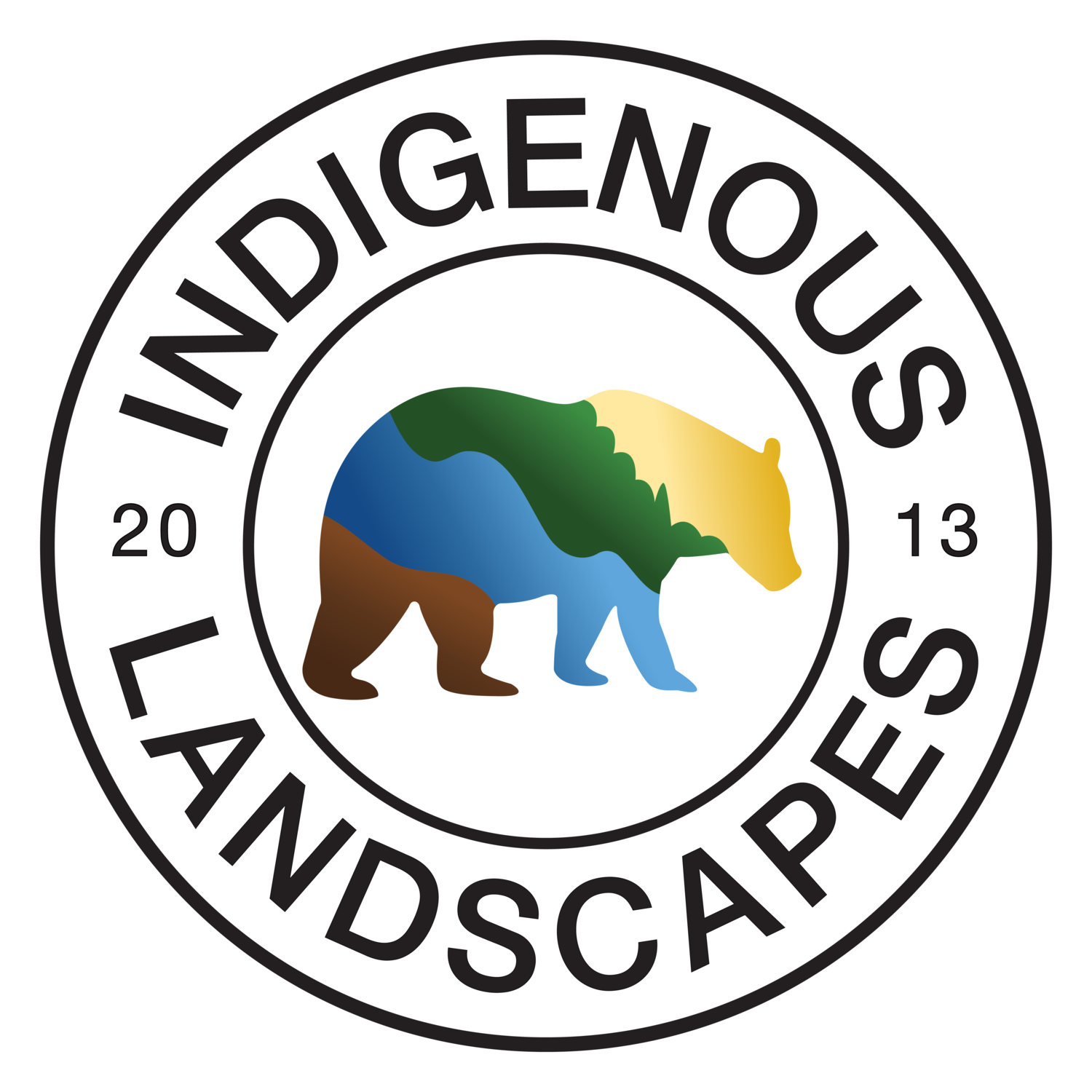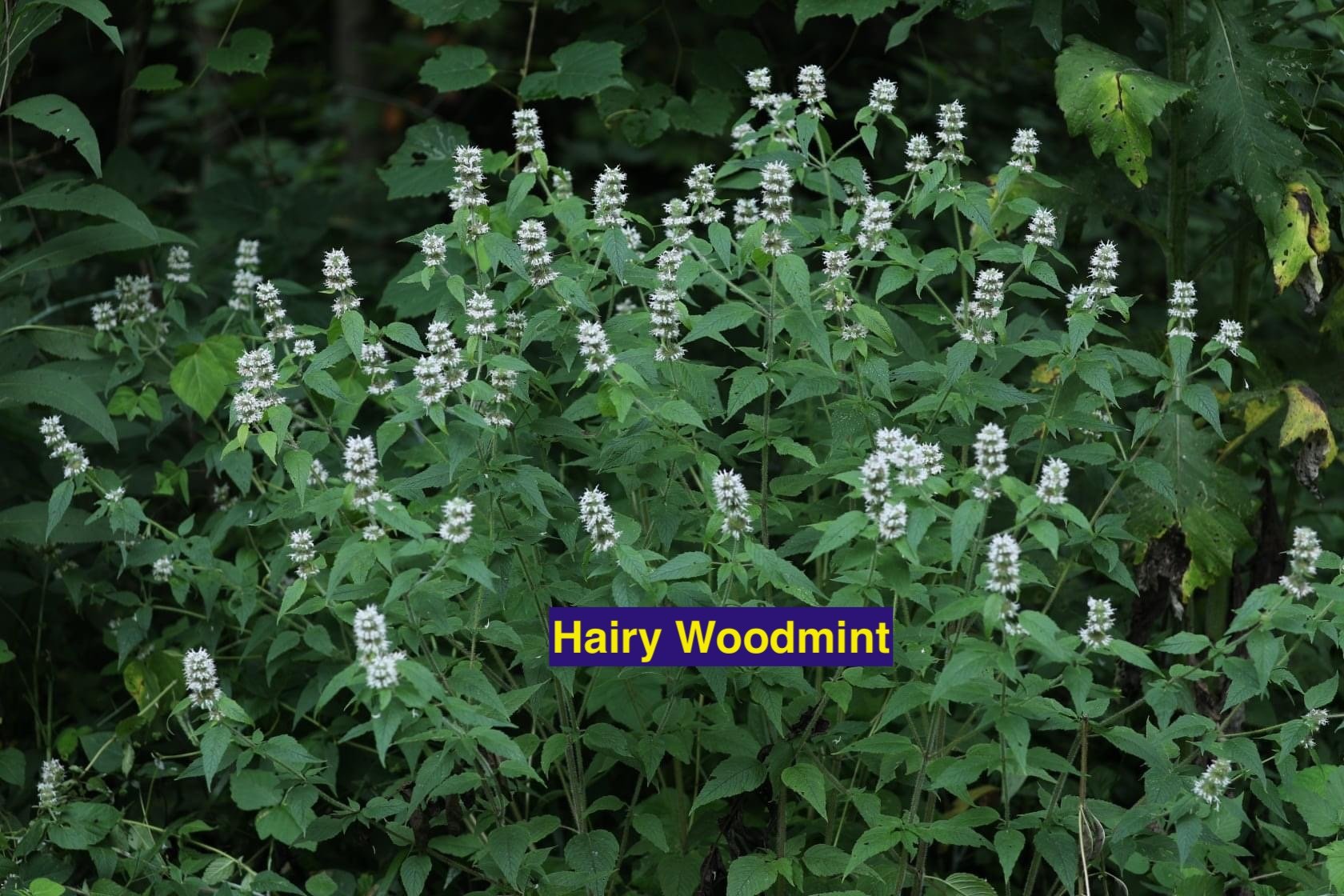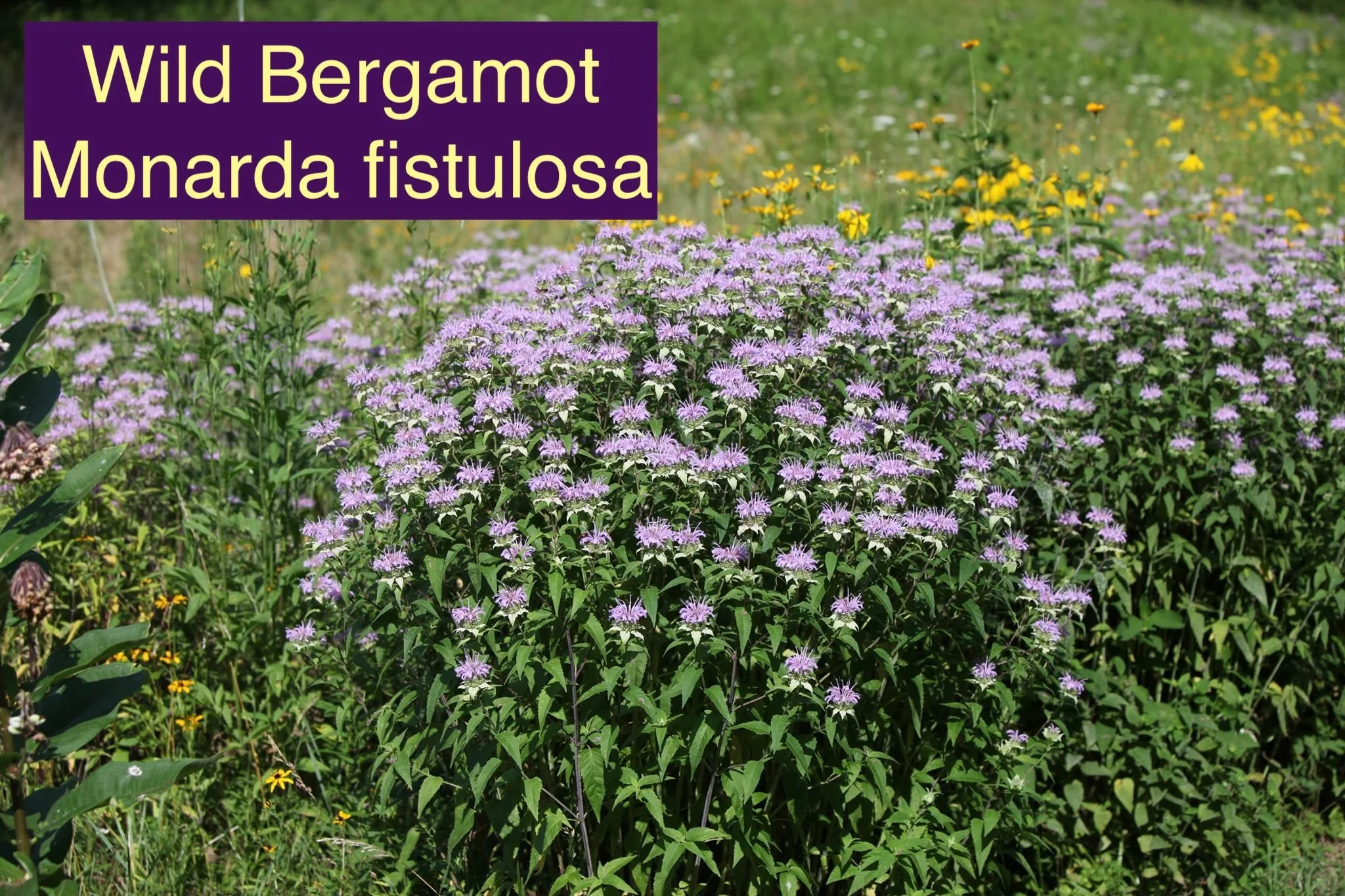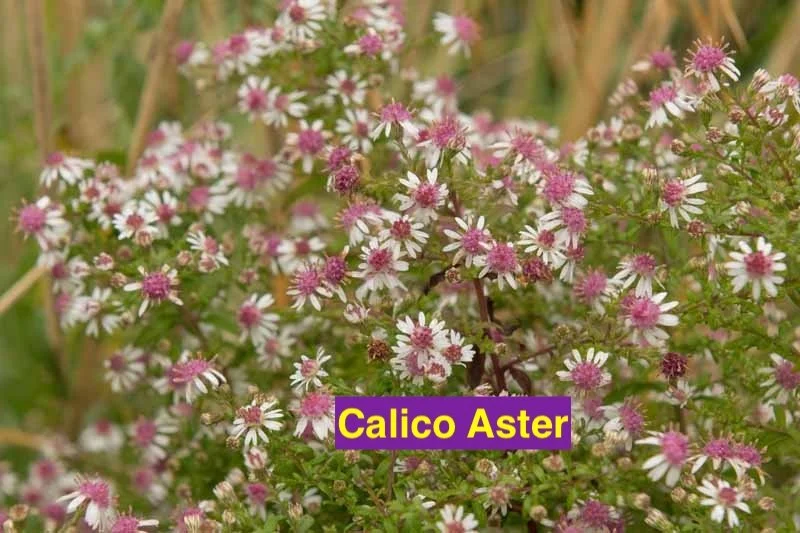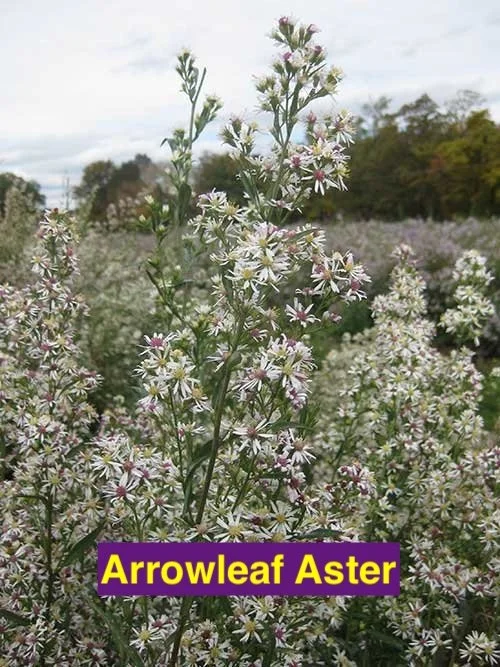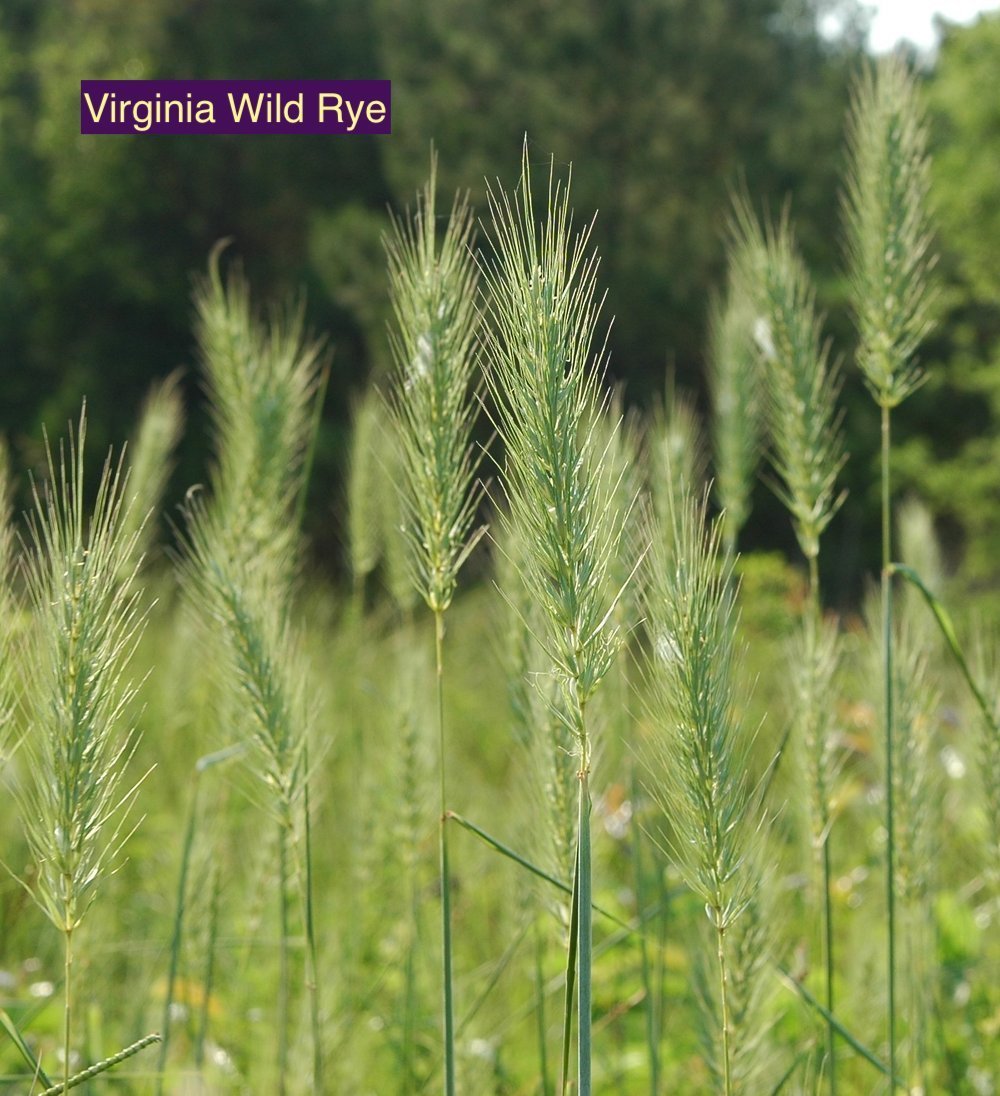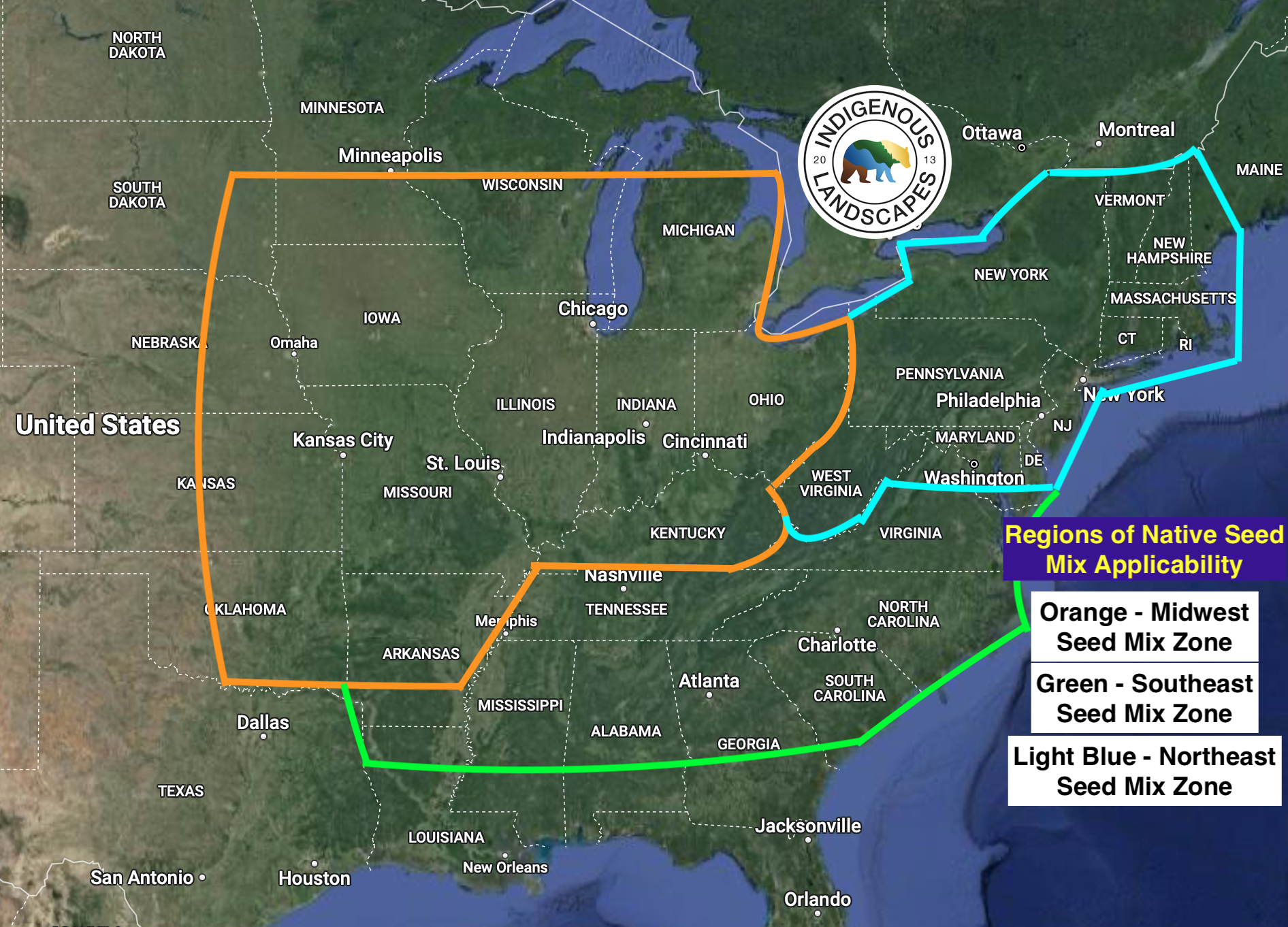Shade Adapted Native Seed Mix
Shade Adapted Native Seed Mix
Our Shade Adapted Native Seed Mix is perfect for planting under and around yard trees, wood edges, shady sides of buildings and homes, and other partially shaded conditions. It can adapt to more sunny conditions if need be, but is designed for at least part day’s shade. It ranges from 2 feet tall to 6 feet tall, with the Woodland Joe Pye Weed (Eutrochium purpureum) being the only species in the mix that gets over 4 feet tall. This group of species is adapted to lower moisture, moderate moisture, and higher moisture soils of silty, loamy, clayey, or sandy soil types. If you seed it in drier conditions, you can give this mix 2 inches of water per 2 weeks via sprinkler specifically during summer droughts to maximize its floral intensity.
This mix is 90% to 100% native to the Midwest and much of the Southeast part of our seed applicability Map. Northeast Considerations: Foxglove Beardtounge is native Pennsylvania but not much further north. Purple Coneflower isn’t native to the northeast. While these species aren’t native to the northeast, they also aren’t damaging and are still beneficial to varying extents. The rest of the native plants in this mix are native to the northeast.
The Seed Mix Map is the last picture in this sequence.
18 Species: Golden Alexanders Zizia aurea, Foxglove Beardtongue Penstemon digitalis, Golden Ragwort Packrea aurea, Red Columbine Aquilegia canadensis, Early Sunflower Heliopsis helianthoides, Wild Bergamot Monarda Fistulosa, Purple Coneflower Echinecea Purpurea, Downy Wood Mint Blephilia hirsuta, Tall American Bellflower Campanula americana, Sweet Joe Pye Eutrochium purpureum, Great Blue Lobelia Lobelia siphilitica, Thimbleweed Anemone virginiana, Solidago caesia Blue Stem Goldenrod, Solidago rugosa Wrinkled leaf Goldenrod, Calico Aster Aster lateriflorus, Arrowleaf Aster aster sagittifolius, Bottle brush rye Elymus hystrix, Virginia Wild Rye Elymus virginicus
Cost Effectiveness
Native Prairie/Meadow Seedings cost about 2 to 5 cents per square foot where as using potted native plants to cover the same area costs $2.00 to $8.00 per square depending on how densely they are installed and mulch use. For example, a 1,000 Square foot pollinator garden would require at least 750 potted native wildflowers/grasses to cover the plot. Potted Plants can cost $2 to $10 per plant, and at a cost of $5.00 per plant, 750 wildflowers/grasses would cost $3,750 + installation costs and mulching costs. If that 1,000 square feet were instead seeded with one of our mixes it would cost $125 - $150, and you could do the installation yourself simply, using our instruction manual. The cost effectiveness ratio increases even higher the larger of plot you are seeding vs. planting with plugs or potted plants. The biggest difference in our seed mixes compared to other company’s is the amount of native wildflower species and grass seed ratio. Our high diversity seed mixes have 40 to 46 species and the percentage of Wildflower seed vs. Grass/Sedge seed is 95% to 5%. Most companies use portions of 20% to 60% grass/sedge leading to grass/sedge dominated plantings that squeeze out the wildflowers overtime. Those companies also make a larger profit because grass and sedge seeds are cheaper than wildflower seeds. For this amount of species, and as heavy of native wildflower to native grass/sedge percentage; no other native seed company is currently beating our pricing.
